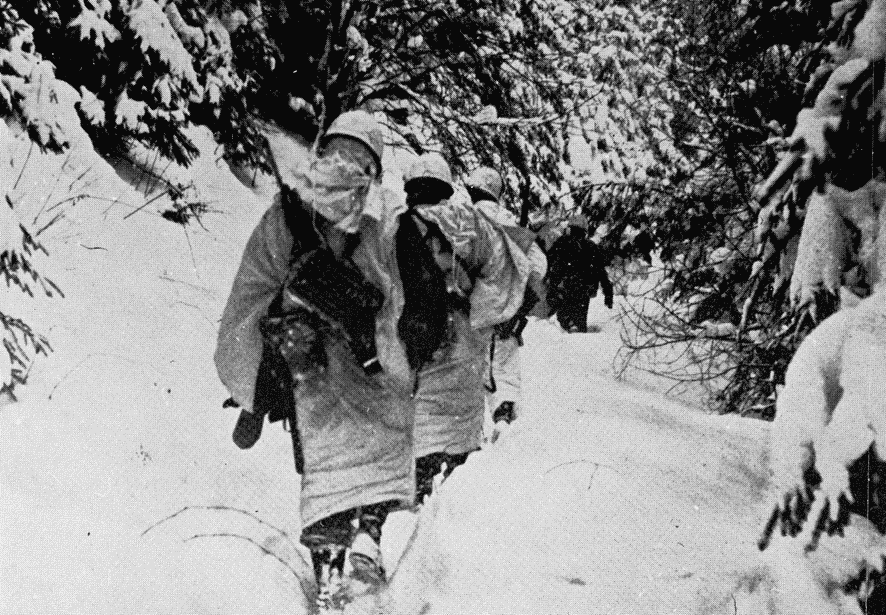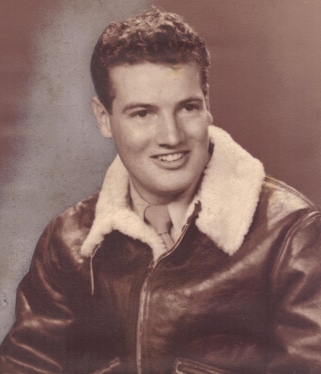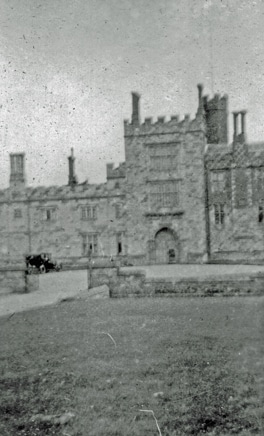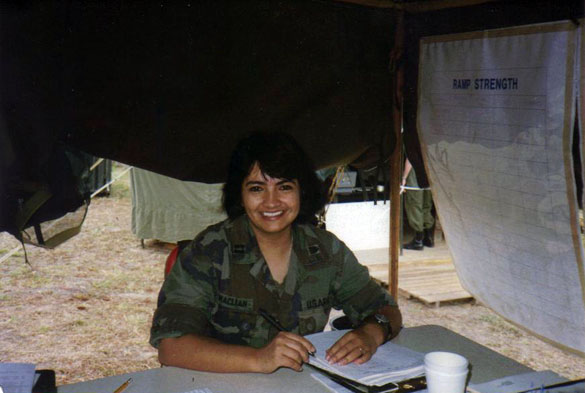The book on my father’s World War II unit, the 39th Infantry Regiment, has been submitted to the editors at Schiffer Publishing, who will work their magic to turn it into something you will love to read. So what is it all about? In short, the story is about one tiny American Army infantry company that fought for our country for several years in World War II. But it’s a lot more than that.
Once upon a time, the forces of evil came within a razor’s edge of plunging the world into a second Dark Age. Many, many nations answered the call to defend civilization, but only one – the United States of America – could tip the balance of fate to victory for the defenders of what was good and right. And she did.
America won the war with a huge industrial base. She won it with a unity of effort seldom seen before and never seen since. She won it by bringing women and minorities into the war effort. She won it with magnificent technology. She won it with a few senior leaders in each military service and in Washington who had the remarkable foresight to comprehend the new character of this war and how it would be conducted. But most of all she won it with a bunch of boys who stood on God-forsaken battlefields around the world and in their own brazen and cocky manner snarled at their foe: “Not today Tojo; not today Benito; not today Adolf. Not today, not tomorrow; not ever. To get to where you want to go, Adolf, you have to go through us. And that ain’t happening.”
The cost of that victory was monumental – which is why we have so many monuments around the world to remember their sacrifice. Unlike in many other nations, however, most of America’s monuments are not triumphal arches or palisaded promenades, but rather her military cemeteries, unfortunately filled to the brim with her heroes. In World War II the United States of America lost 407,316 military dead – enough that almost every city, town, and village lost loved ones. As to civilian deaths worldwide, the slaughter estimates range from 45 million to 95 million – and the only reason America did not suffer millions of civilian deaths at home is because these same young Americans stopped the enemy before they could get here.
There have been thousands of books written about the war, maybe tens of thousands, based primarily on records and reports, and the accounts of senior officers. And many are excellent. But there has always been a problem. The enlisted men and women of America who fought World War II were notoriously reticent about discussing their experiences. Called “The Greatest Generation,” they should also have been dubbed “The Silent Generation.” Not only were they closed-mouthed, many seemed proud that they “wouldn’t talk” to the extent that children and grandchildren, maybe even you, of these soldiers came to the conclusion that even if they waterboarded “Old Gramps” – which they would never do to such a beloved person – he wasn’t talking, so why bother because everyone was just going to get wet.
Maybe it was because my father was so closed mouthed about the war that I wrote this book. Once in a while, you could get a few grunts and groans out of the old man if you were lucky, but he was of the mind that the war was a chapter of life already finished and better off not to be re-read. My brother and I would get a hint of his experiences when Dad stormed into our bedrooms each school-day morning, screaming at the top of his lungs in German to get out of bed, turning on every light, throwing back the curtains and, when he was in a particularly charitable mood, opening the windows all the way on frosty-cold mornings to ensure that you got out of bed – quickly.
Dad had spent some “quality time” as a prisoner of war (POW) at some place in Germany called Stalag VI G and obviously wanted his two sons – who had designs on attending West Point – to get used to catching hell like he did every morning there at that camp when a German sergeant did the same thing.
We are going to try to get their story right, in spite of their reluctance in life to talk much about the war. Of course, each one would insist that we not talk about his own efforts, but remember his buddies instead, saying that they were the real heroes, and what they were able to accomplish together. All were unique, and it was this individuality that made every other soldier better.
“A soldier can be a hero and a hero can be a legend and a legend can make a superman out of a soldier.” You will read about all about that; in fact, the intent of the book is to put you right alongside of the soldiers of Company B, 39th Infantry Regiment – in the same foxhole. You’ll start your journey at Fort Bragg, North Carolina where the division is formed. Then its’ off to England in 1942 and then we’re all going to Algeria, Tunisia and Sicily; we’ll see combat in each. After that it’s Normandy, France, and then we’ll head east to Belgium. This fighting is tough, but you’ll think the war will be over by Christmas. It won’t be. Your next stop is the Hürtgen Forest. If you survive that, and a lot of us didn’t, it’s on to another miserable place, the Hohes Venn. Then it’s Merode Castle (see photo above) and then Elsenborn Ridge in the Battle of the Bulge. The castle, built in 1263, has five-story towers, and a wide moat with 7-foot-deep, cold water. There is one entrance – a narrow bridge twelve feet wide, covered by machine gun fire. Getting into that castle, borrowing a phrase from poet Alfred, Lord Tennyson, you will be “stormed at with shot and shell.”
In January 1945 we’ll try and get warm and attack the vaunted Siegfried Line, where concrete bunkers have machine guns we call “Hitler’s buzz saws” or “Kraut bone saws” and when you hear them firing, you’ll know why. Then you’ll see the inside of a German POW camp. You’ll lose a lot of weight, be infested with fleas and lice, suffer constant diarrhea, get no hot showers, sleep three to a bunk, and see guys drop from typhus – while angry guard dogs try to bite you.
Meanwhile, Company B keeps fighting to the end of the war in Europe. It is a rough time and casualties continue at an alarming rate right through the end and a lot of our buddies died. After that, however, everyone did not just pack up their gear and head home. What would happen with Japan, how long will the occupation of Germany last, what is the system for a soldier to return home? Finally, there is a Conclusion and Epilogue; save them for last. Some of the book is sad; but much is funny, which could be offensive to some readers. But no less an authority than famed war correspondent Ernie Pyle had this to say about humor in war.
“It would be wrong to say that war is all grim; if it were, the human spirit could not survive two and three and four years of it… As some soldier once said, the Army is good for one ridiculous laugh per minute. Our soldiers are still just as roughly good-humored as they always were, and they laugh easily, although there isn’t as much to laugh about as there used to be.”
At the end of most chapters you will find a total of over fifty special topics under the category of “School of the Soldier,” an old Army term that has to do with teaching a soldier the really important stuff in the Army and how to survive, so you can tell their story when they wouldn’t.
History is the oxygen for storytelling; and storytelling is the essence of humanity. Once upon a time, your father, grandfathers, and great-grandfathers became part of that history which fueled a legend that should never die – in part because so many of them did. Your mother, grandmothers and great-grandmothers were legends too, sometimes in combat areas – such as the Philippines, where 77 Army nurses, the “Angels of Bataan and Corregidor,” were forced by the enemy on a 68-mile “death march” without food or water in 100-degree temperatures – or back home working in dangerous factory jobs building the Arsenal of Democracy. Now it is up to you whether that legend is passed down to your children and grandchildren, or whether you let that legend die. Because legends don’t die with a bang; they die with a whimper.
You might ask: “Why is it up to me to keep their story alive?” Because you would fit right in with us in Company B. How do we know? When something in life knocks you down, and you get back up on your feet, wipe the blood off your nose with your sleeve, and say: “Is that all you’ve got?” you’re in Company B. If people have told you that you were too small, or too slow or too anything, and you went out and proved them wrong, you’re in Company B. If you ever saw someone bullied by a group of people bigger than you and you jumped in to help that person, you’re in Company B.
You love dogs? In 1942, a young soldier found a stray dog in the Aleutian Islands, and took care of him until he was reassigned to the States. Putting the dog, named Buff, in his duffel bag, the trooper took him on the journey. Months later the soldier climbed aboard a troopship – Buff hidden again in his duffle bag – and went to Europe and Company B, where Buff served as a mascot and helped pull guard duty. So if you love dogs, you’re in Company B. And if you love to read a book about American soldiers, then you’re in Company B, too.



